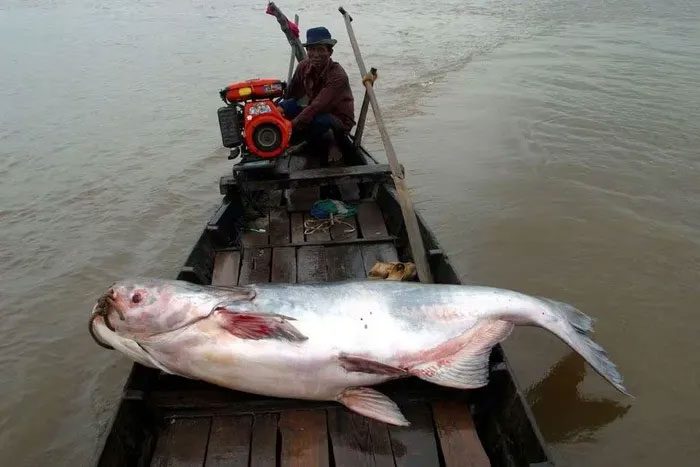A report compiled and published by WWF in collaboration with 25 global conservation groups on March 4 reveals that approximately 19% of the 1,148 fish species in the Mekong River are at risk of extinction.

Image of a giant catfish in the Mekong River. (Source: Reuters).
According to reporters in Southeast Asia, global conservationists warn that unsustainable development threatens the health and diversity of fish species in the Mekong River region, with one-fifth of the fish species living there facing the risk of extinction.
The report titled “The Forgotten Fish Species of the Mekong River”, prepared and published by the World Wildlife Fund (WWF) in collaboration with 25 global conservation groups, indicates that around 19% of the 1,148 fish species in the Mekong River are at risk of extinction.
Notably, among these species, 18 are classified as “critically endangered” by the International Union for Conservation of Nature (IUCN), including both species of the largest catfish in the world, the largest carp in the world, and the giant freshwater stingray.
The report highlights the threats to fish in the Mekong River, including habitat loss, conversion of wetlands to agriculture and aquaculture, unsustainable sand mining, the introduction of invasive species, worsening climate change, and hydropower dams that fragment the flow and branches of the Mekong River.
The report assesses that the decline of fish in the Mekong River — which accounts for over 15% of the world’s inland fish catch and generates more than $11 billion annually — could jeopardize food security for at least 40 million people in the lower Mekong Basin, whose livelihoods depend on the river. Stretching nearly 5,000 km from the Tibetan Plateau to the South China Sea, the Mekong River is considered the lifeblood for farming and fishing for millions of people in China, Laos, Myanmar, Thailand, Cambodia, and Vietnam.


















































